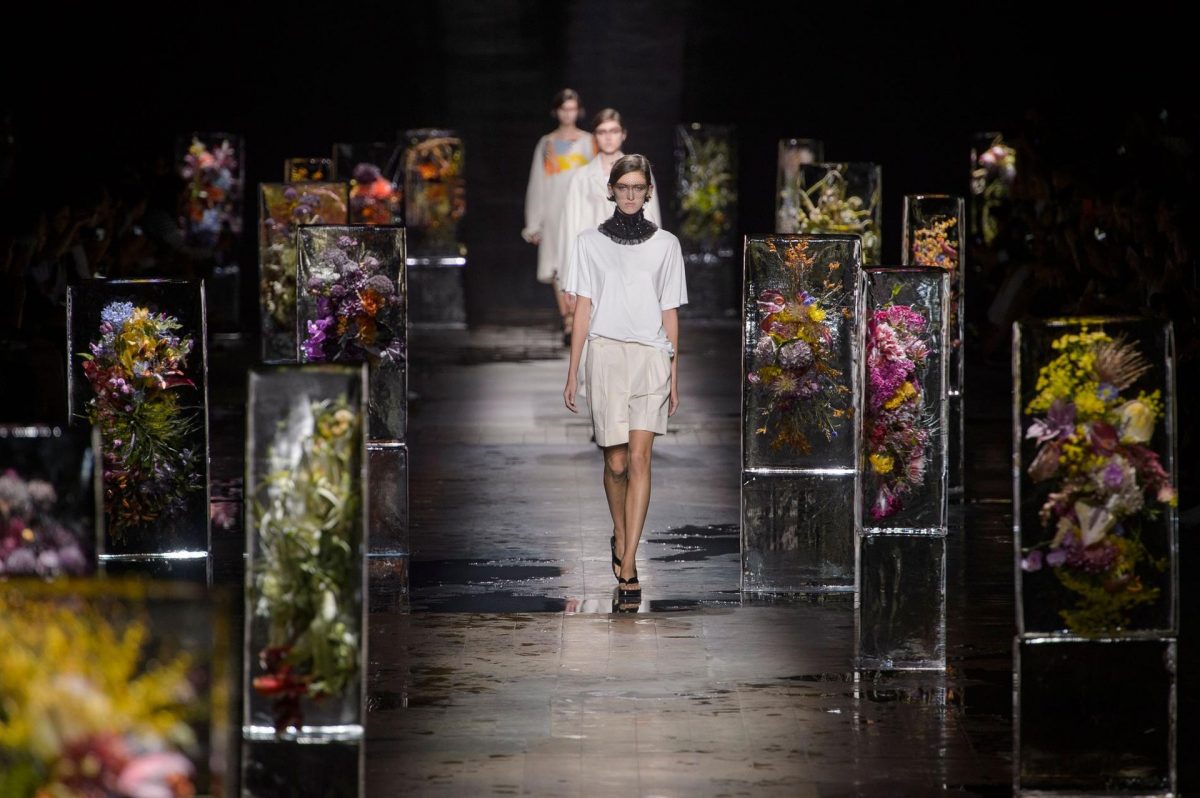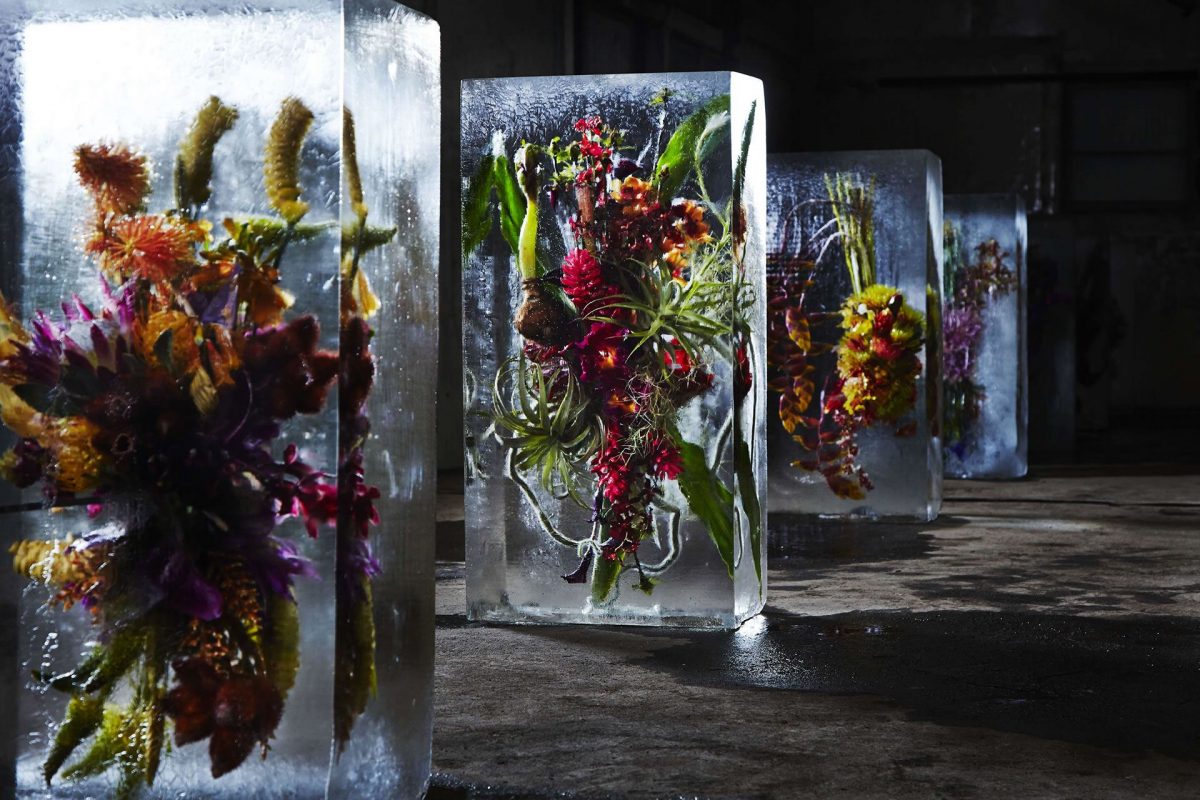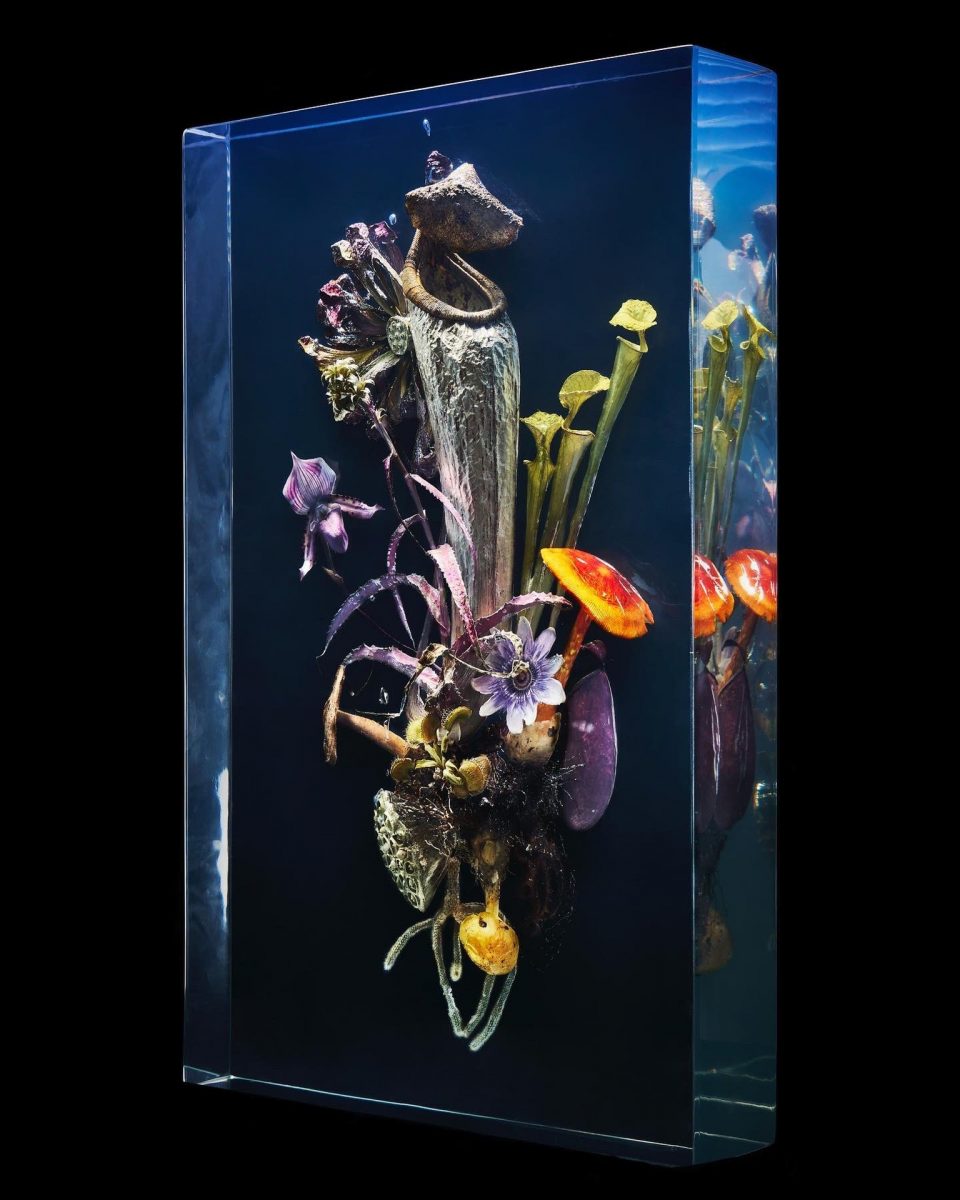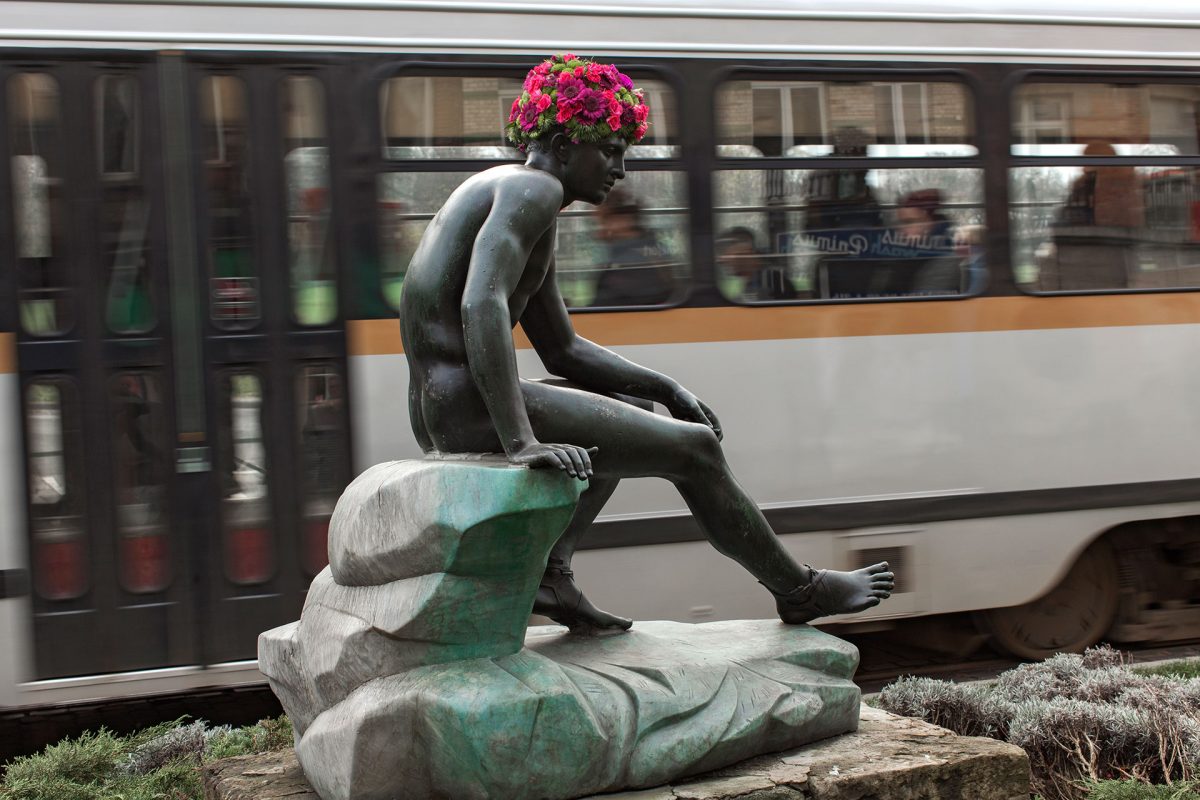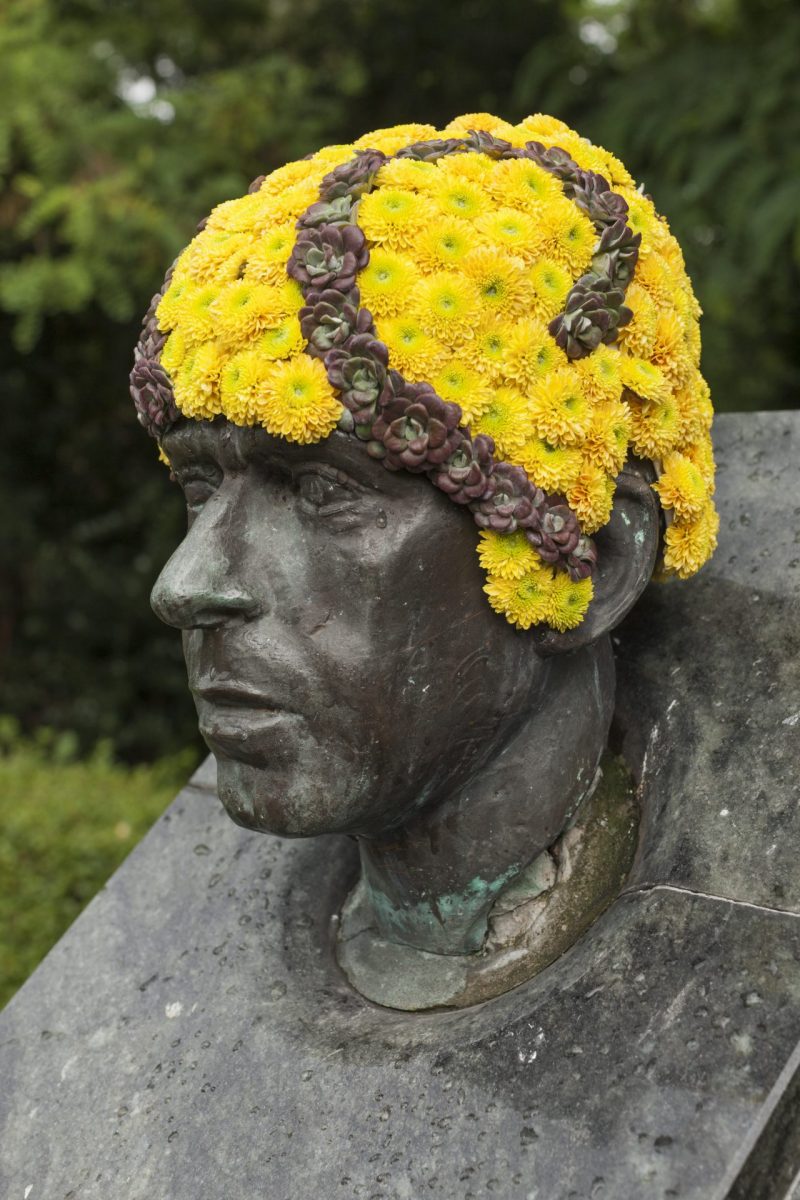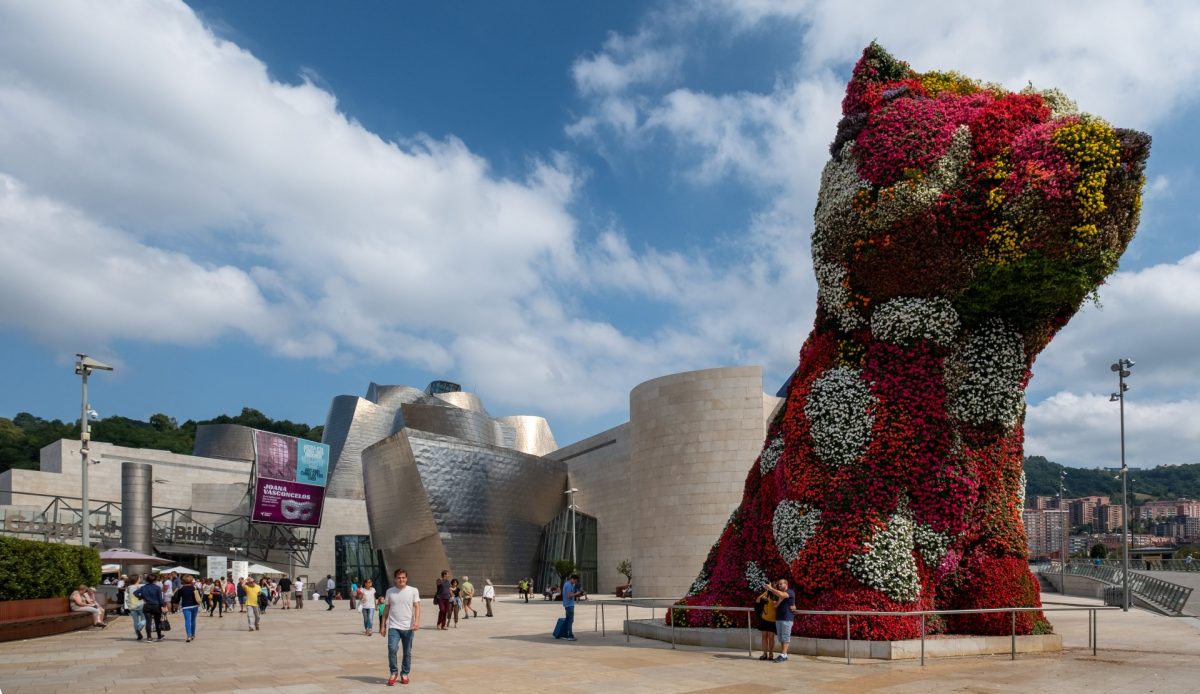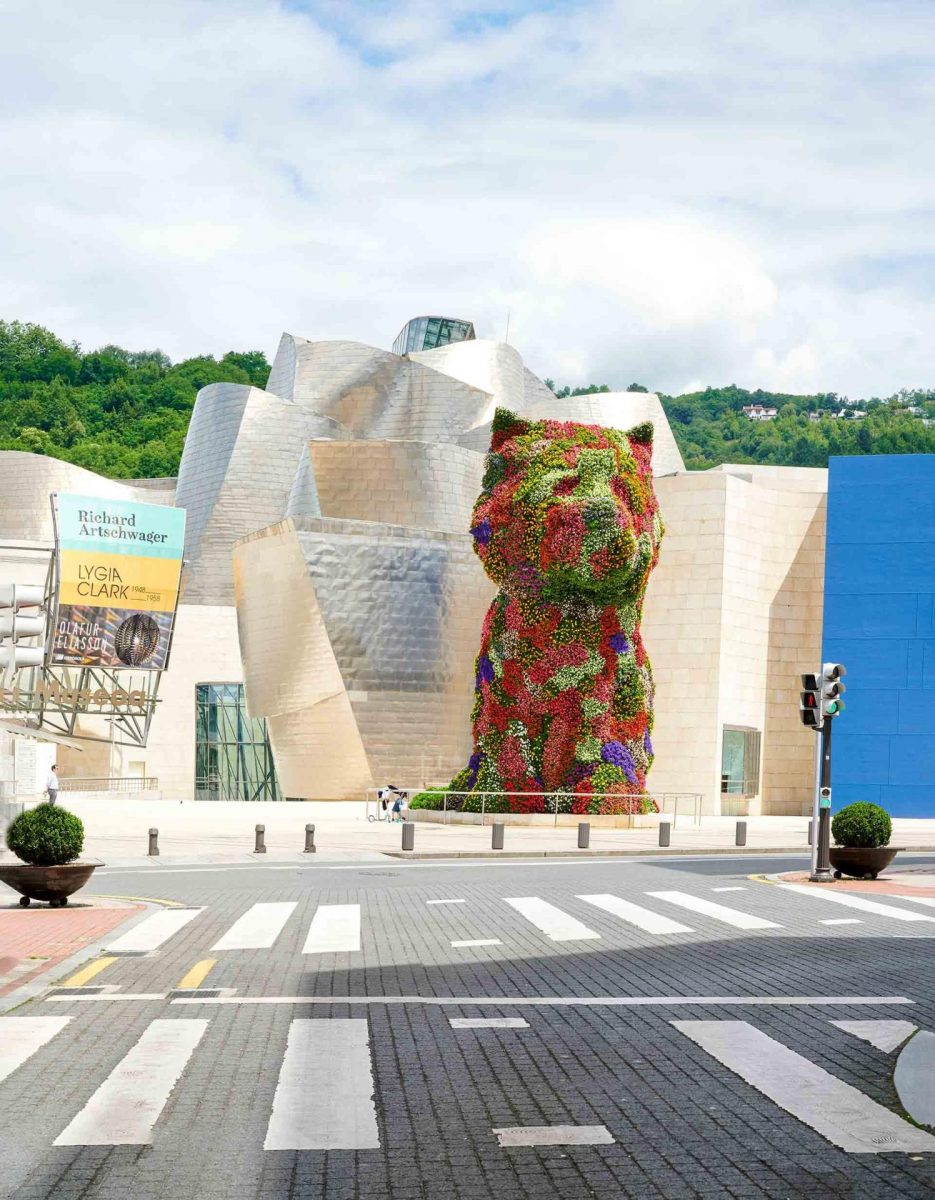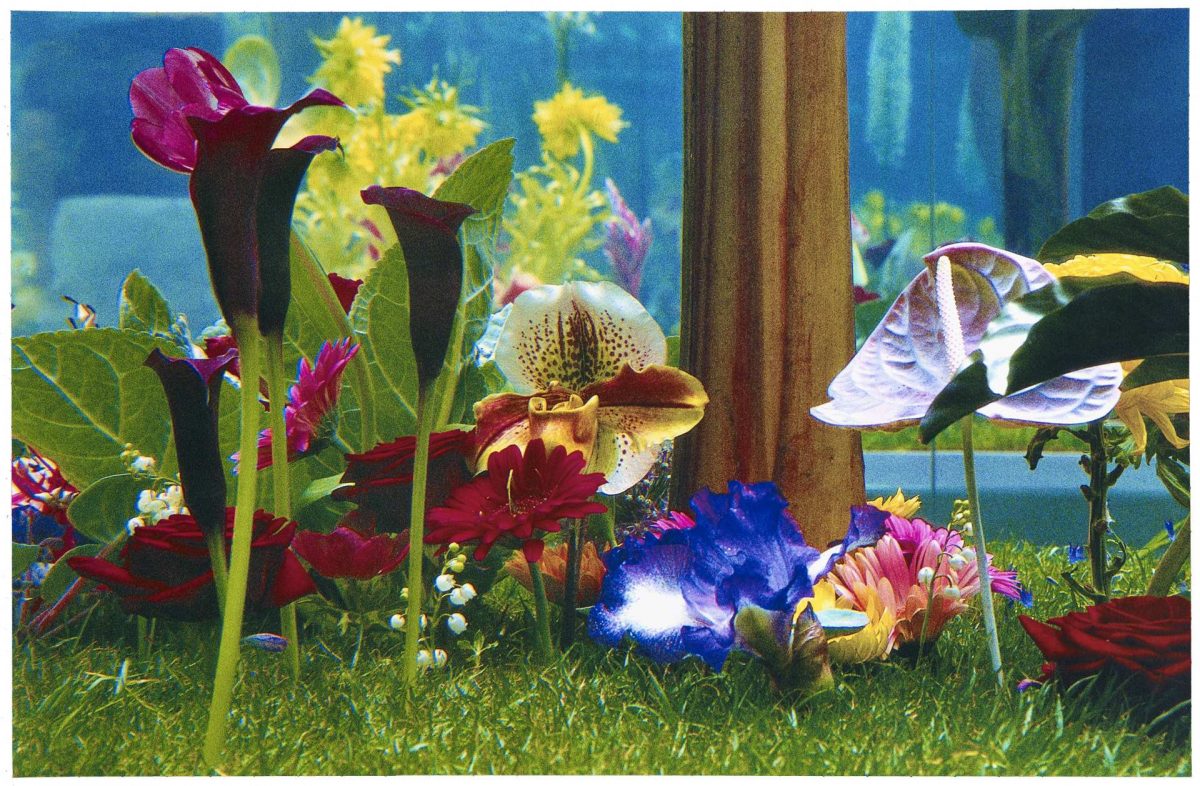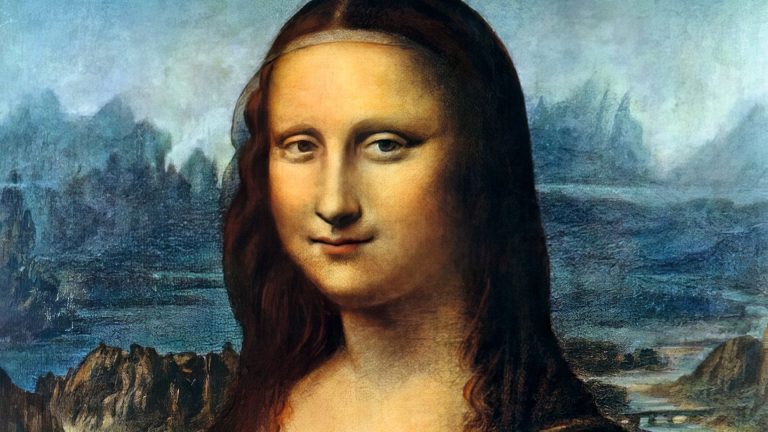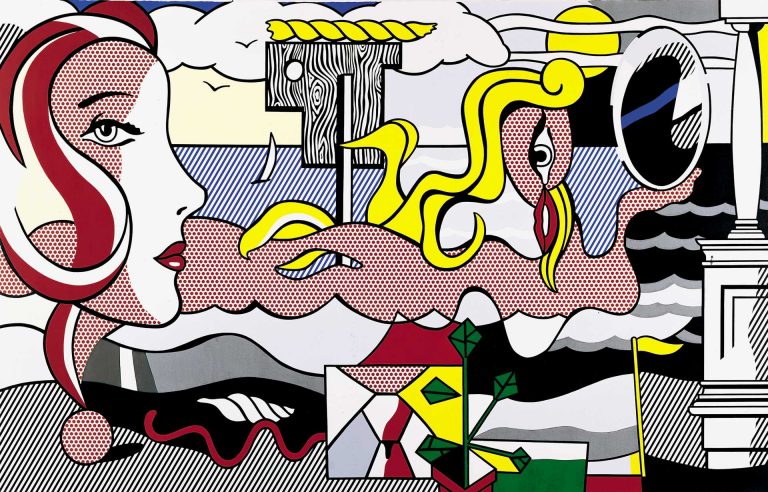Flowers are not the easiest material for the sculptor. However, recently, more and more artists are turning to him. How and why do artists create works of plastic art from flowers? In April this question is relevant.
Ice Flowers of Azuma Makoto
Another way to deal with the fragility of flowers chose the Japanese sculptor-florist Azuma Makoto. Since 2015, he freezes it to prolong the moment of beauty. Representing a country that invented ikebana with all the nuances of the flower language, Makoto creates works with very complex meanings.
When in 2017 the owner of the auction house Sotheby`s ordered him sculptures to decorate the table at a festive lunch of one of the large auctions, the artist spent about a month on its creation, gathering a «bouquet» of a mixture of Japanese and English flowers in such a way that the flowers represent the brightness of the coming summer.
On another occasion, he decorated the Dries Van Noten House (2017) with his ice-cold colours, striking fashion lovers.
The ice, alas, is also short-lived, and soon these works literally melting.
«Flowering» by Geoffrey Mottarta
One of the most popular modern authors working with flowers is the Belgian Geoffrey Mottart, who is also called the boring word «florist». But what he does is not boring. For example, since 2016, as part of his art project Fleurissements, which started in Brussels and then spread to other cities, he has flourished with complex floral arrangements of statues and busts. He places crowns on it and puts on beards. From the point of view of modern art, this genre is called «intervention» – invasion. Such «innovations» have short life, they are quickly removed by public utilities. However, the artist manages to photograph them and post them on his Instagram. Some of Mottart’s Belgian statues receive his attention only once, while others, such as the bust of King Leopold II, are constantly returning.
«Puppy» of Jeff Koons
Jeff Koons is one of the most famous modern artists of recent decades. The objects he created decorate the best museums in the world and set records at auctions. He also owns the largest and best known flower sculpture – «Puppy» in front of the Guggenheim Museum in Bilbao (Spain), created by the standards of kontemporari art long ago, in 1992. The giant stainless steel frame on the concrete foundation is shaped like a sitting dog. The frame is covered with a layer of turf on wire mesh and geotextile fabric. Thanks to the excellent Spanish climate, the structure remains in good condition. Twice a year, in May and October, all flowers on «Puppy» are replaced with seasonal: in autumn and winter there are pansies of various colours, in spring and summer there are begonias and petunias. This work usually takes nine days and requires nine gardeners. Last summer, the owners of the museum decided that the statue (by the way, equipped with auto irrigation) needs to be renovated after all, and announced the collection of donations for this purpose – it is estimated that 100 thousand euros will be needed.
Mark Quinn’s flower sculptures
More famous (and much more durable) flower sculptures by the legendary Mark Quinn, which he began to make in 1998. In this series, real flowers at the ideal stage of flowering were carefully immersed in silicone oil at the ideal stage of flowering and placed in a refrigerator for a year. “They die,- the artist says,- but they become a perfect, eternal image of themselves. These are bouquets of flowers that have exchanged their biological life for visual immortality». Thus many works were created, which were named «Eternal Spring», «Reincarnation» and others. In 2000, Quinn created the «Garden» – a giant tank filled with a variety of plants, a kind of image of paradise, as in nature these plants bloom at different times. Although these works have a high reputation on the art market, owning them is a big hassle: it requires a continuously working refrigeration equipment.
Фото: Geoffroy Mottart, forsellmaskin.se, rushi.net, pinterest.fr, shop.marcquinn.com, metmuseum.org, marcquinn.com, commons.wikimedia.org, guggenheim-bilbao.eus
